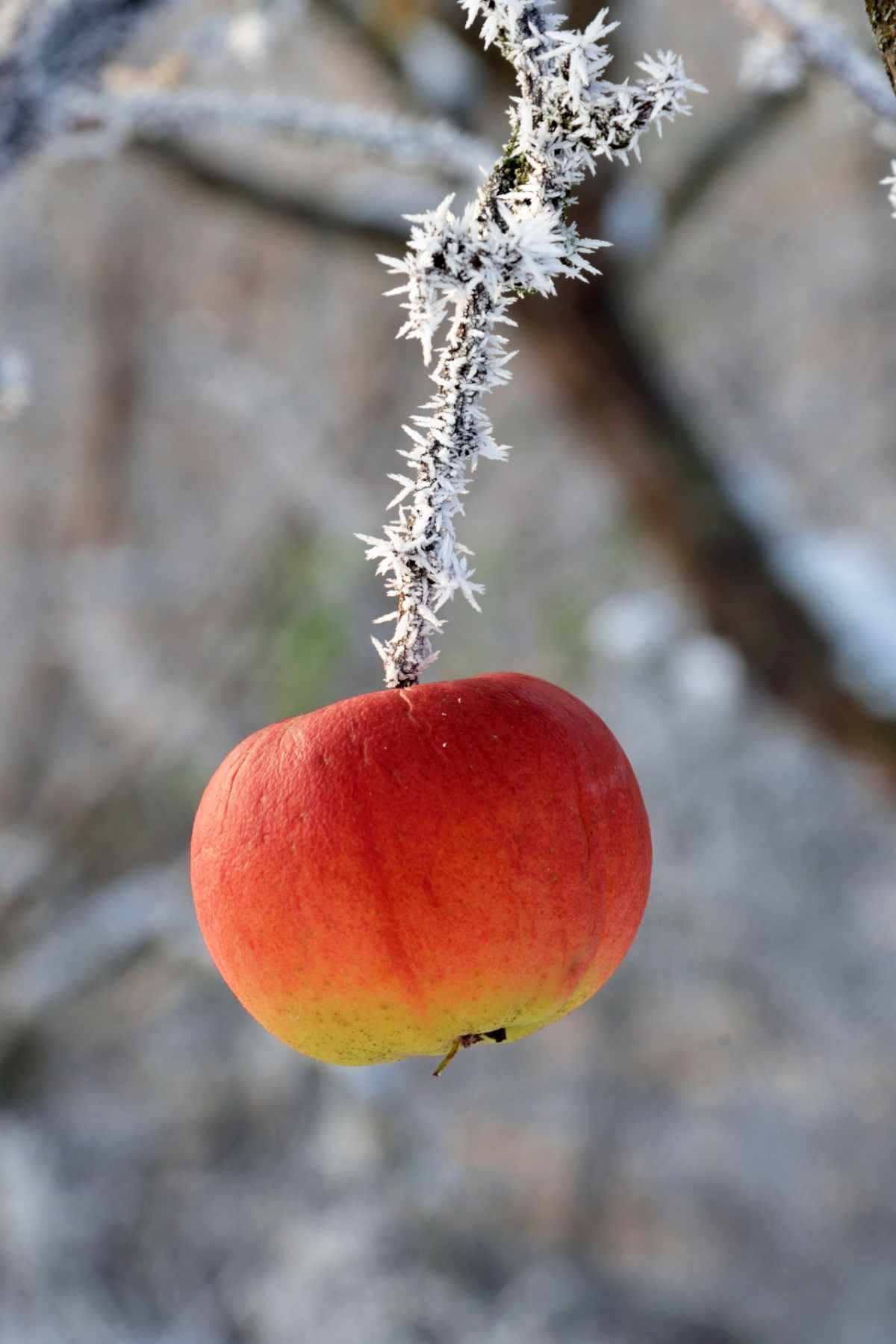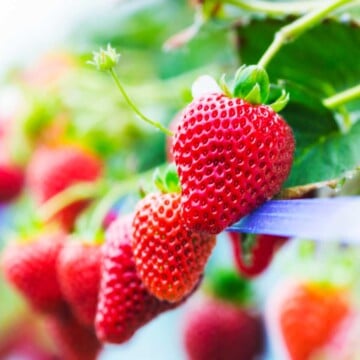Keeping apples fresh for months requires more than placing them upon the counter. Temperature, humidity, and careful storage make a huge difference in crispness and flavor. The methods below show how to store, freeze, can, dehydrate, and preserve apples so they stay tasty longer.

⬇️ Table of Contents
- Table of Contents
- Best Practices for Apple Storage
- Best Methods For Storing Apples
- Quick Reference: Method vs. Shelf Life
- Freezing Apples: Prepare for Storage
- Dehydrating Apples: Long-Term Option
- Choose The Right Apple for Storage
- Canning Apples: Preserving Apples for Winter
- Storing Apples As Preserves
- FAQs About Storing Apples
Table of Contents
- Best Practices for Apple Storage
- Best Methods for Storing Apples
- Quick Reference: Method vs. Shelf Life
- Freezing Apples: Prepare for Storage
- Dehydrating Apples: Long-Term Option
- Choose the Right Apple for Storage
- Canning Apples: Preserving Apples for Winter
- Storing Apples As Preserves
- FAQs About Storing Apples
- Posts To Visit
Best Practices for Apple Storage
This article covers simple, effective ways to keep all kinds of types of apples fresh, including long-term storage, freezing, canning, preserves, and dehydration. Follow the temperature and humidity targets below for the best results.
Target environment: a cool, dark space with steady airflow. Aim for 30-35°F (-1-2°C) and high humidity around 90-95% to slow moisture loss. A basement, root cellar, or refrigerator crisper drawer works well. Add a damp paper towel in the crisper to help prevent shriveling.
Keep apples away from other produce. They release ethylene gas, which speeds ripening. Inspect often and remove any bruised fruit. Wrapping each apple in newspaper or paper towels reduces bruising and limits spread if one turns.
Best Methods For Storing Apples
To make the most of your apple harvest or grocery haul, utilize the methods below so apples stay crisp, juicy, and flavorful.
Keep Apples Cool and Dry
Place whole apples in a cool, dark, dry spot like a cellar or the refrigerator crisper. Keep temps between 30-35°F (-1-2°C) to slow ripening.
Monitor Humidity
Apples need humidity to stay crisp. In the fridge, line the drawer with a damp paper towel to maintain moisture and reduce shriveling.
Store Separately
Since apples emit ethylene gas, keep them away from leafy greens and sensitive fruit to avoid premature spoilage.
Inspect Regularly
Check weekly for bruises or soft spots. Remove damaged fruit so the rest stay sound.
Wrap In Newspaper
Wrapping apples individually helps prevent bruising and limits spread if one turns.
Quick Reference: Method vs. Shelf Life
| Method | Best Use | Target Temp | Humidity | Estimated Shelf Life |
|---|---|---|---|---|
| Refrigerator (crisper) | Fresh eating | 30–35°F (-1–2°C) | High (damp towel) | 4–8 weeks (variety-dependent) |
| Root cellar/basement | Bulk storage | 30–40°F (-1–4°C) | High | 1–4 months |
| Freezing (slices) | Pies, baking, sauces | 0°F (-18°C) | N/A | Up to 6 months |
| Dehydrating | Snacks, trail mixes | 135°F (57°C) to dry | Low | 6–12 months (airtight) |
| Canning (tested recipe) | Pie filling, sauces, butter | Room temp storage | N/A | Up to 1 year (sealed) |
| Preserves (jam/jelly/chutney) | Spreads & condiments | Room temp storage | N/A | Up to 1 year (sealed) |
Freezing Apples: Prepare for Storage
Freezing locks in flavor and keeps prep easy for pies, sauces, or smoothies later.

Steps:
- Wash, core, and slice evenly.
- Treat with lemon juice or a fruit preservative to limit browning.
- Freeze slices upon a parchment-lined sheet for 1-2 hours.
- Move to airtight bags or containers and press out excess air.
Use frozen apples within 6 months for best flavor and texture.
Dehydrating Apples: Long-Term Option
Dehydrated apples are shelf-stable, portable, and naturally sweet.

How To Dehydrate:
- Wash, core, and slice thinly.
- (Optional) Soak in lemon water for 5 minutes.
- Arrange slices upon trays without overlap.
- Dehydrate at 135°F (57°C) for 6-8 hours until pliable with no moisture pockets.
- Cool to room temp before storing airtight.
For longest life (up to 1 year), store in a cool, dark pantry in airtight packaging.
Choose The Right Apple for Storage
For long storage, pick firm, tart apples. These handle cold and moisture loss better than tender, super-sweet types.
Top picks: Granny Smith, Fuji, Honeycrisp, Braeburn, Winesap.
Granny Smith

Granny Smith apples stay crisp for months and shine in baking. A classic sour green apple.
Fuji

Fuji apples possess dense flesh and hold texture. Under steady cold storage, they can last 5-6 months.
Honeycrisp

Honeycrisp apples deliver a sweet-tart snap and hold well for several months with proper humidity.
Other Good Storage Varieties
These also store well with the right setup:
- Braeburn: Sweet-tart, firm; around 4 months.
- Golden Delicious: Thin skin; around 4 months.
- Rome: Thick skin, sturdy texture; around 5 months.
- Winesap: Tart, dense; up to 6 months.
Pick the right variety and you'll enjoy fresh apples much longer.
Canning Apples: Preserving Apples for Winter

Canning makes pie fillings, sauces, and apple butter ready upon demand. Always use a tested recipe and proper processing times.
Steps:
- Pick a reliable recipe.
- Sterilize jars and lids per manufacturer instructions.
- Prepare the apple mixture and hot pack if the recipe calls for it.
- Fill jars, leave recommended headspace, remove air bubbles.
- Wipe rims, apply lids, and process in a water bath or pressure canner as directed.
Properly sealed jars keep up to 1 year in a cool, dark cabinet.
Storing Apples As Preserves

Preserves stretch apple season and add versatility in the kitchen.
Apple Sauce
Cook apples with sugar and spices until soft; blend smooth. Can or freeze for later.
Apple Butter
Slow-cook until thick and spreadable. Canning yields a long shelf life once sealed.
Apple Jam and Jelly
Jam keeps fruit texture; jelly sets clear. Process in a water bath for safe pantry storage.
Dried Apples
Slice thin, dehydrate, and store airtight. Great for snacks, granola, and baking.
Apple Chutney and Relish
Cook apples with vinegar, sugar, and spices for tangy, savory condiments.
Canned Apple Pie Filling
Prepped and canned filling helps you make fast pies all year. Use a tested thickener and approved process.
FAQs About Storing Apples
How long do apples last in the fridge?
Most firm varieties last 4-8 weeks in the crisper at 30-35°F (-1-2°C) with high humidity.
Should I wash apples before storing?
Wait to wash until right before eating. Excess surface moisture encourages mold during storage.
Can I freeze whole apples?
You can, yet slices freeze better. Whole apples may turn mealy upon thawing. For pies or sauces, frozen slices give nicer results.
Why do cut apples turn brown?
Enzymatic browning occurs when flesh meets air. Lemon juice or a commercial antioxidant helps slow this reaction.
What apples store the longest?
Granny Smith, Fuji, Winesap, and Braeburn hold up well under cold, humid storage.





Leave a Reply